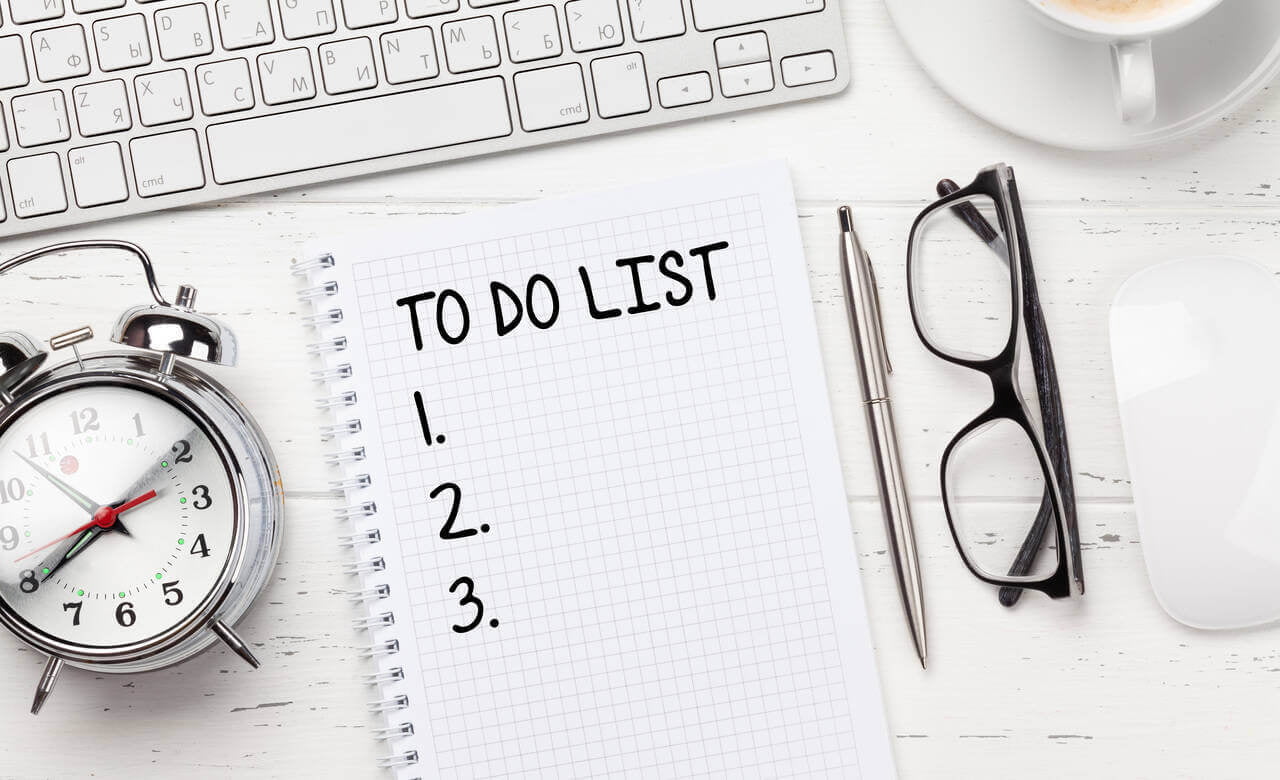
To many, time management is a daily challenge. It is a regular occurrence that we struggle to successfully manage time and productivity, continually reassessing how we can do better the next day. Whether we are stuck at home or working from an office, we wrestle with ways to stay productive and speed up our way to success in all aspects of life. Everybody, including businesses as a whole, wants to succeed and achieve more. The first step is to find ways to boost productivity and develop a good strategy to keep that in place. Most of us are not as productive as we would like, either because we have a bad habit of indulging ourselves in unnecessary distractions that affect our productivity in the workplace or because there is no motivation to progress toward our goals. We can replace bad habits and reactive patterns with good habits that make us proactive and determine our own working day. Follow these tips on how to increase your productivity and become your best, most productive self at work.
1. Streamlining Your Space by Using the Right Tools
1. Streamlining Your Space by Using the Right Tools
The first thing you need to do is analyze your workplace environment. See if it motivates you or puts you off. You can improve your productivity by making a few changes around you. Organize your workspace in a way that it makes you want to produce better results without getting distracted. The first tip is to optimize your space. By tidying up and getting rid of the clutter, you can easily manage your time. You will not have to look here and there for the items you need. This practice will help increase your productivity significantly. An orderly and free environment should help you to think more clearly and achieve better results. Make sure your workspace allows you to have a system that encourages you to be efficient. Whether it is your physical desk or desktop, both have to be conducive and practical for working. Digitalization has become so beneficial to us in this day and age that utilizing the right technology will go a long way. We live in such a great time filled with thousands of apps and tools readily available for us to use to make our lives easier. Take advantage of the right tools such as creative, project management, and marketing tools to stay ahead and to boost productivity.
2. Make a To-Do-List of Your Plans
2. Make a To-Do-List of Your Plans
Gain better control over all your projects and tasks through a well-thought-out plan. Nowadays, there are hundreds of project management tools to help you plan and carry out your ideas in an organized way, but the first step in the planning process is to create your task list. Write them down or type a draft. The goal is to find out what works best for you. Start with making a list of your main goals, followed by the things you need to do to achieve them. Set deadlines for each item, along with the estimated time to complete them, if possible. How many important tasks can you realistically fulfill tomorrow to make significant progress? Make sure you set realistic goals. It means that the deadlines need to be coordinated and feasible. Changes are bound to happen along the way, and you can make alterations in the process. Setting realistic goals allows you to evaluate your capabilities so that you can better prepare and strategically combat unforeseen factors that may pose as barriers to your goals.

Note that while planning does require dedicated time and effort (precious time we often think we do not have), setting aside that time now is actually more efficient and saves time in the grand scheme of things. Having a solid plan laid out sets a clear direction towards your goals. As you go through your list, you will eventually become more efficient in moving from one task to another. Knowing that you are on top of everything due to your forward planning will keep your motivation intact and keep you moving forward. Planning clears all the chaos for you to be able to set priorities, organize further steps, and take necessary actions to achieve them efficiently and effectively. Creating a to-do list is essential to stay productive. You can make a simple do-it-yourself list from your calendar with just a few simple steps. Once you start using these applications, you will be amazed at how much faster and easier your work will be if you do it properly. Imagine ending your day knowing that you are on track to achieve everything on your list, even if it is just for a few minutes at a time. Your to-do list is a valuable productivity aid, so make sure you are aware of how to create and track your to-do list. Keep in mind that different methods work for different people; some people use smartphone apps, others prefer to keep a handwritten diary.
3. Create an Organized System through Project Prioritization
3. Create an Organized System through Project Prioritization
Project prioritization focuses on aligning projects with your strategy to ensure successful project delivery. The goal is to improve business results through prioritization. The process involves determining which projects add the most value and identifying ones that hold the least benefit to the organization. Companies can then better allocate resources and better assess the company’s capabilities in accomplishing these projects, making sure they are executed efficiently and effectively. Research has shown that active prioritization improves the organization’s performance by 40 % more in value. Unfortunately, successful prioritization rarely eventuates due to the ever-evolving infrastructure and atmosphere. External factors are constantly changing and affecting businesses in unprecedented ways. The most effective way of establishing an optimal project prioritization system is to start with your strategy. Establish a robust project strategy alignment and reevaluate both long-term and short-term goals. Build strategies that pave multiple ways to success. Other than business success, the benefits of an excellent project prioritization include higher project success rates, increased ROI, improved quality of projects, reduced bottlenecks and obsolete projects, better resource allocation, and better company decisions.

Scalable processes are what companies strive for. You can also use Lean Six Sigma to recapture your business's intellectual and automation resources, as well as revenue. This is an effective approach to improve and document processes. It makes it simple to perform, learn, improve, and operate in order to achieve faster growth. Lean Six Sigma makes use of the efforts of the entire team to get better results. As a result, your employees will take pleasure in process improvement and will be more accountable to one another. Even better, Lean Six Sigma fosters an invaluable culture of transparency and trust at all levels of the organization. Laborers will also appreciate each other's position in the company by realizing that everyone has a role to play.
4. Start With the Big Projects
4. Start With the Big Projects
Get these big, scary tasks out of the way: The important jobs should be done first. Think about the priority levels of these tasks, then prioritize and delegate as necessary. Instead of piling up on tasks and pushing them for later, you should take it off your plate and hand it off if you can, but of course, while considering the order of priorities. Your focus should be on the most important tasks first so that they appear less scary in comparison. This will give you more concentration on the bigger projects all day long and make you more productive overall as you easily move on to simpler tasks. It is about getting the most demanding tasks done and dusted and giving yourself the fuel for a productive day.
5. Stop Multitasking
5. Stop Multitasking
Most people tend to get things done all at once. While you might think it is an effective strategy, know that it can do more harm than good to your productivity. Research shows that productivity can be reduced by 40% by mental blockages that occur when people jump from task to task. The study also found that multitasking can physically harm the brain, affecting the area that is associated with decision-making. So stop doing it all at once and increase your productivity by focusing on one task at a time. Multitasking may lead you to leave many tasks open, creating more bottlenecks. Low priorities can be put back and delegated or outsourced, so you can spend more time on things that add value to you and your position in the company.
6. Assess Capabilities and Delegate Tasks
6. Assess Capabilities and Delegate Tasks
Maximize productivity through effective delegation. An employee should never have too much on their plate as taking on more projects at a time will only create inefficiencies and lead to higher losses ahead. Good leaders and managers know that to achieve a business’s goals, they have to administer effective delegation. Enablers often bring more value than hands-on leadership. The latter often results in ineffectiveness at times as it disallows managers to oversee operations in their entirety. Seeing gaps and issues in processes is usually only visible at a high level. Proper delegation simply calls for a clear direction towards business goals through a step-by-step process and team assignment to ensure the completion of said goals. You can also create new opportunities when you delegate or outsource low-priority positions.

Delegation may sound simple, but it is a skill not all managers have. Delegating tasks also involves a well-developed strategy that demands time and experience to master effectively. The most common complaint with delegation is that it can end up giving the manager or leader even more work because they feel they have to constantly supervise. The key is to understand the assignee’s strengths and assign the right tasks that utilizes what you know of them. We should stress that micromanagement, not delegation, is the practice of assigning a task to someone and then closely monitoring them while they do the job, is not what you want to do. A productive workplace means encouraging autonomy and it takes getting used to, but you will be surprised at how productive you can be when you really let go.
7. Eliminate Distractions and Create a Workable Space
Concentration is a limited possibility, and high productivity requires concentration. It also gives you a feeling of satisfaction as well as a feeling of fulfillment for your work. For many of us, the main distractions that hurt productivity are social media and email. Distractions need to be identified and ignored. To be productive, you need to turn off the noise, email notifications, and phone calls when you need full concentration. Stay focused and engaged with your current tasks to perform the simplest tasks more effectively. Distractions can easily steal away a massive chunk of your time if you give in to them. While most of us rely on the internet to complete daily objectives, the allure of the web and social media is a force to be reckoned with. Many companies ban their employees from accessing social media when they are in the workplace, as this puts a strain on productivity.

You should not spend most of your day checking up on your friends and indulging in their daily routine, as these are obvious distractions that prevent you from achieving what you need to do in a reasonable amount of time. However, taking breaks is important too. Once you have done an important task, allow yourself a few minutes of internet surfing, then switch off and get back to work. If you are scrolling through your feed in the workplace, only do so during your breaks. It should not become a habit; otherwise, it can take up the whole day and affect work performance and productivity. Keep in mind that eliminating distractions is vital to productivity. Time is precious, and it can quickly fly by, so make sure you are making the most out of it. Start with a space conducive to working. Dedicate a space for working, isolated from your space for rest and leisure so that you can start with a clear and ready mindset. Store your phone slightly out of reach, so you are less tempted to check anything unrelated to work. In your browser, keep only important tabs open and focus on one task at a time. You can also impose deadlines and set timers for each task to allow yourself to take sufficient breaks to recharge. Sometimes clearing that cloud in your head is all about simplifying things with full focus. You can do more when you learn to focus.
8. Watch Your Health
8. Watch Your Health
Lack of motivation, stress, anxiety, poor sleep, and poor mental health are productivity killers. Sleep deprivation is known to have a negative impact on performance. Getting enough sleep and making exercise part of your routine are just some of the things you need to do every day to become productive. The healthier you are, the happier and productive you become, and the more productive you work, the better chance you have of success, both at work and at home and in life overall. Remember to take breaks to keep your mental and physical health in check.
If you are stuck on which tools to use for your business and what strategies to employ, our strategy consulting services can assist you and make sure you are always productive. Contact us today for more information.

